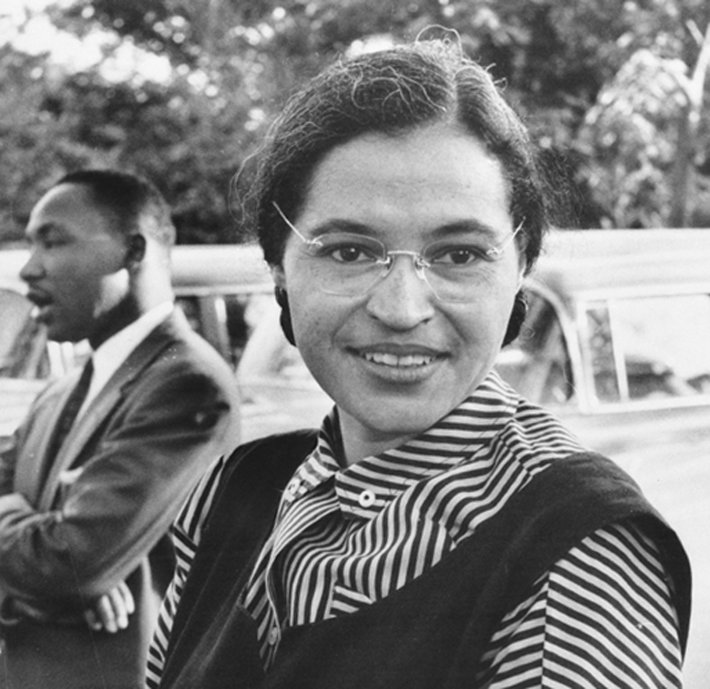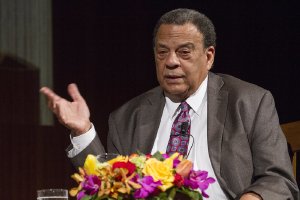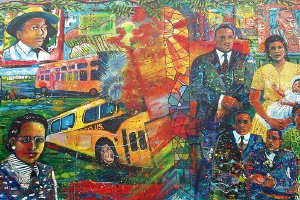Publicly remembered as the quiet, tired seamstress whose refusal to give up her seat to a white man on a Montgomery, Alabama, bus propelled the U.S. civil rights movement into wide public view, Rosa Louise Parks was also a religious woman whose relationship with the African Methodist Episcopal (AME) Church prompted her defiant action in 1955.

Parks’ faith was the kind that “requires people to act in the world,” says Brooklyn College Political Science Professor Jeanne Theoharis, the author of nine books and numerous articles on the civil rights movement.
In a discussion and Q&A with Religion & Ethics Newsweekly before the 108th anniversary of Parks’ birth, Theoharis said there is “no way to understand how she makes that stand, how she keeps going, without understanding at the core of her activism is her faith.”
“A diamond that had been polished in the hands of God...She formed the rock on which we now stand.”—Philip Robert Cousin, senior bishop of the AME Church in his 2005 eulogy of Rosa Parks
Parks’ act of resistance led to the famous 381-day Montgomery bus boycott, in which her church played an active role. The movement thrust the then 26-year-old Rev. Dr. Martin Luther King Jr. into the national spotlight as a new leader for the civil rights movement.
In his 1958 book, Stride Toward Freedom: The Montgomery Story, King described Parks’ resistance as “an individual expression of a timeless longing for human dignity and freedom.” She was, he wrote, “anchored to that [bus] seat by the accumulated indignities of days gone by and the boundless aspirations of generations yet unborn.”
It was in the African Methodist Episcopal Church that Parks learned her first lessons in civil disobedience. “Indeed, Mrs. Parks was to become a deaconess in the AME church,” says Religion & Ethics Newsweekly correspondent David Tereshchuk, who led the discussion. “She said that it was in her church that ‘I learned people should stand up for their rights, just as the Children of Israel stood up to the Pharoah.’”
“She felt that the church has a responsibility to be active—and certainly she was proud of the way that it did so,” Theoharis said.
Montgomery’s “angel of defiance,” as Parks might aptly be called, is popularly known just as “the ‘bus woman’” who didn’t budge from her seat, said Julian Bond, Chairman Emeritus of the National Association for the Advancement of Colored People. “In point of fact, she had a long life after that and before that where she did many things that were courageous and brave.”
The Montgomery bus boycott was “a tremendous feat of organization that drew on networks built over years,” Theoharis wrote in a February 1 New York Times opinion piece titled, “The Real Rosa Parks Story is Better Than the Fairy Tale.”
“Understanding the demonization, death threats and economic hardship Mrs. Parks endured for more than a decade underscores the costs of such heroism” at a time when the civil rights movement lacked the support of most Americans, Theoharis added.
Although her December 1, 1955, protest was probably spontaneous, leading to her arrest, “Parks had been attending anti-segregation workshops … devoted to leadership training for trade unionists and civil rights workers,” Tereshchuk pointed out, adding: “And as time went on, Rosa Parks’ own political views could surprise people.”
“Just putting that name ‘radical’ with Rosa Parks shakes you because you’re thinking about this sweet little woman who wouldn’t move on the bus,” observed Bond. She was, in fact, “to the left of the political spectrum,” he added. “She was ahead of Dr. King on so many issues.”
When Parks died at the age of 92 in 2005, she became the first woman and second African American whose body lay in state in the U.S. Capitol Rotunda. As many as 4,000 people, including then-Senator Barack Obama, bore witness, while additional mourners paid tribute at overflowing memorials held in Montgomery and in Detroit, where Parks spent more than half of her life.
A bishop of the AME Church, Philip Robert Cousin, offered a fitting eulogy to Parks. She was “a diamond that had been polished in the hands of God…the rock on which we now stand.”
_________________
The Church of Scientology publishes this blog to help create a better understanding of the freedom of religion and belief and provide news on religious freedom and issues affecting this freedom around the world.
The Founder of the Scientology religion is L. Ron Hubbard and Mr. David Miscavige is the religion’s ecclesiastical leader.
For more information, visit the Scientology website or the Scientology TV network.


